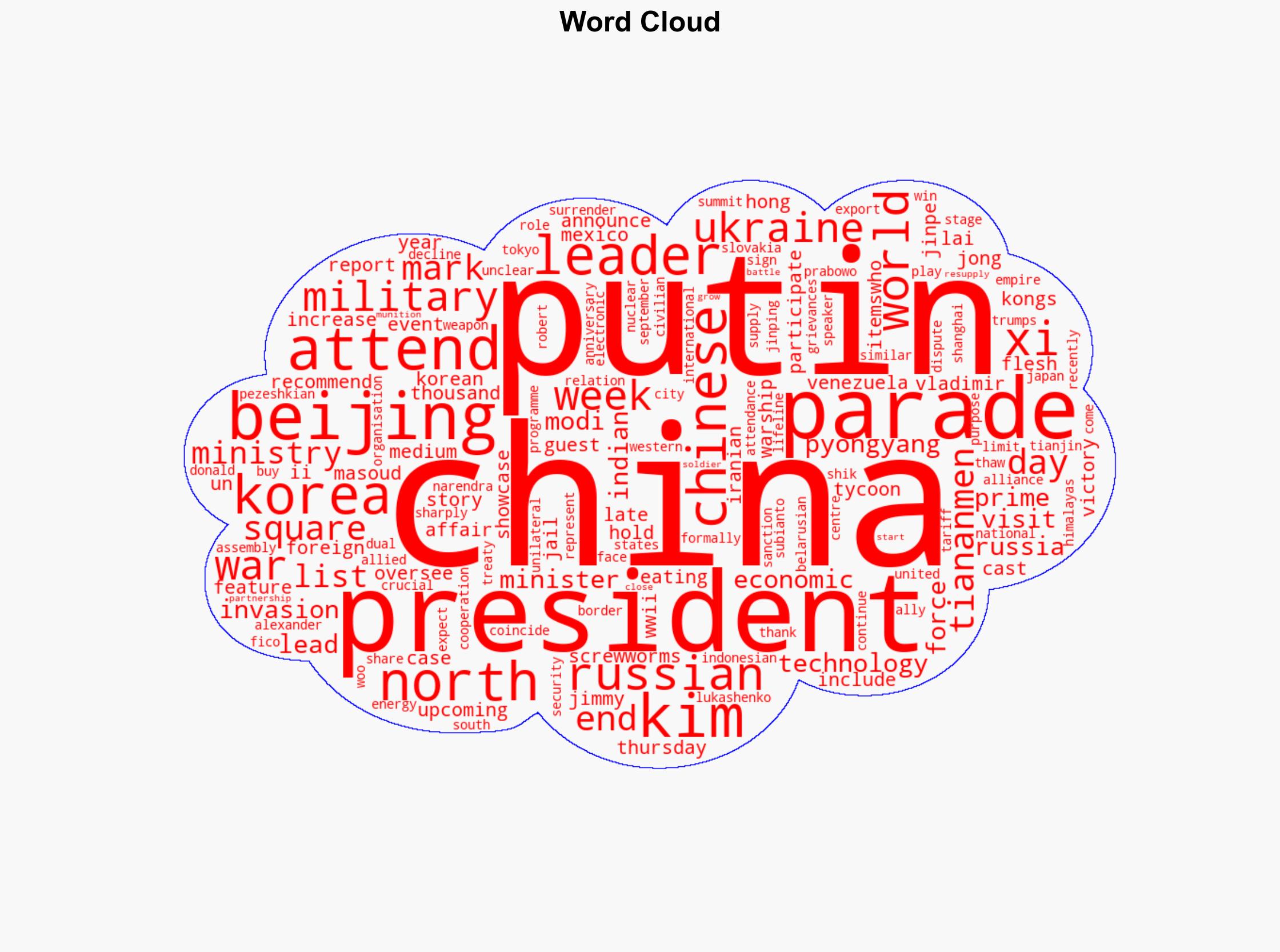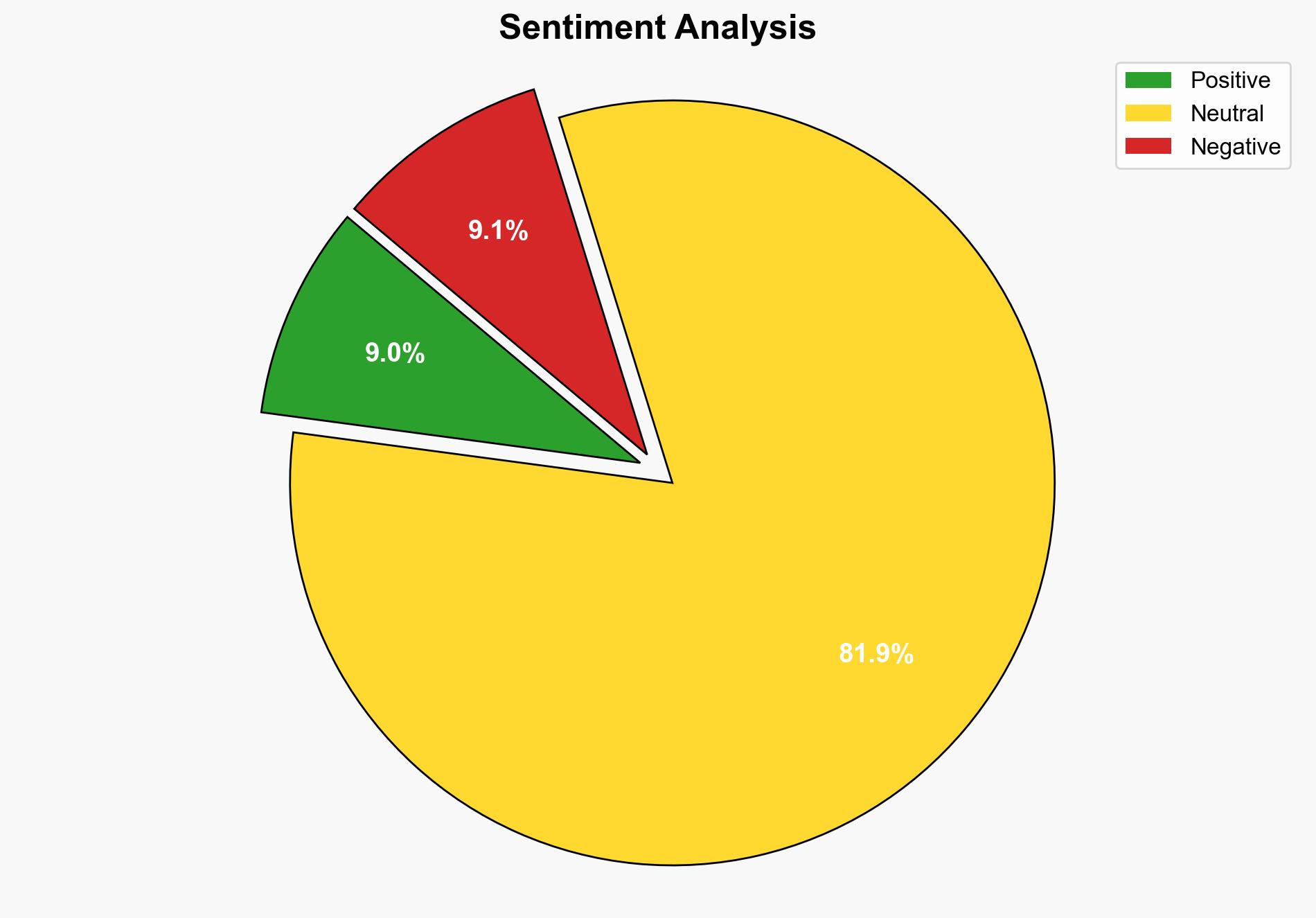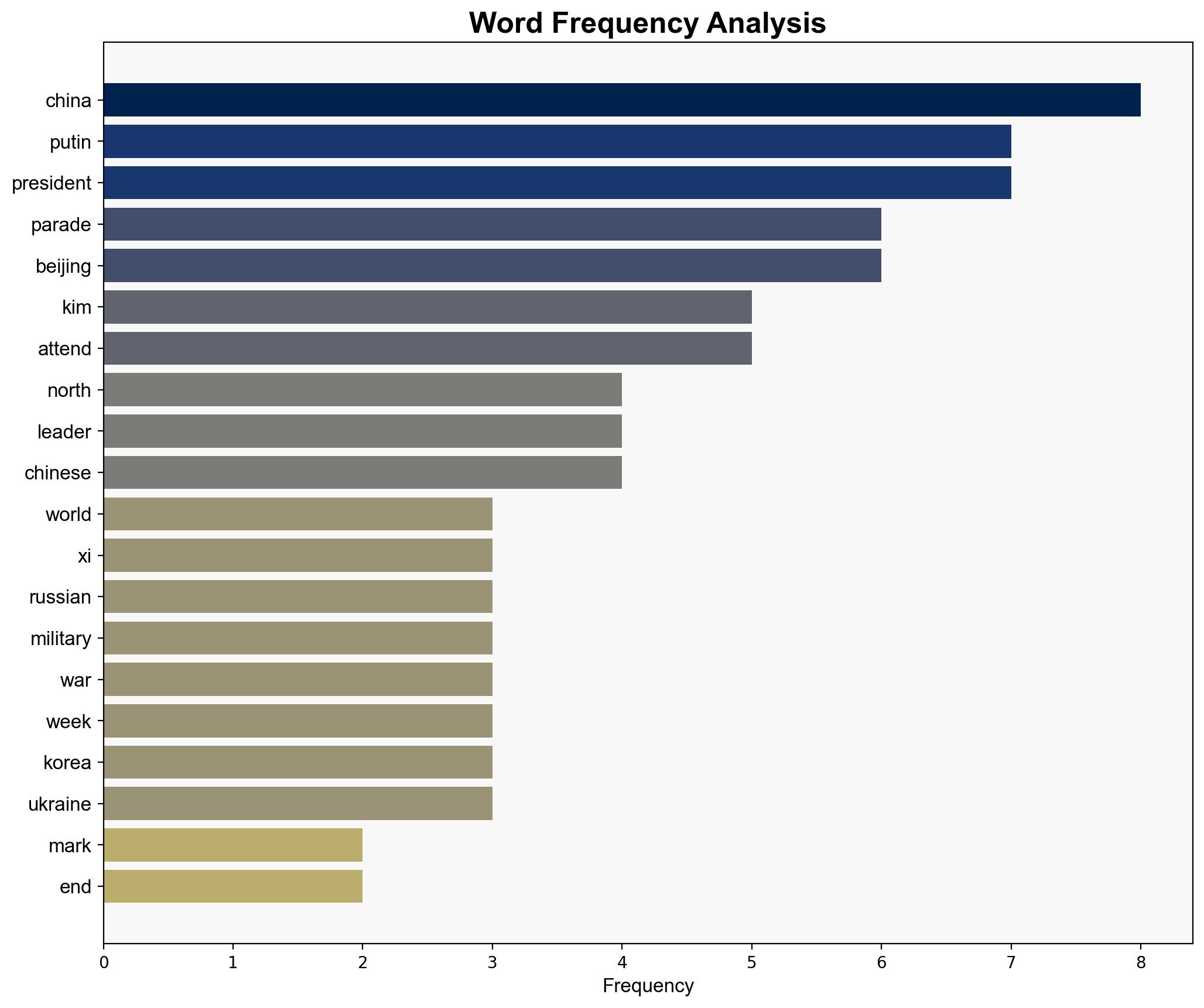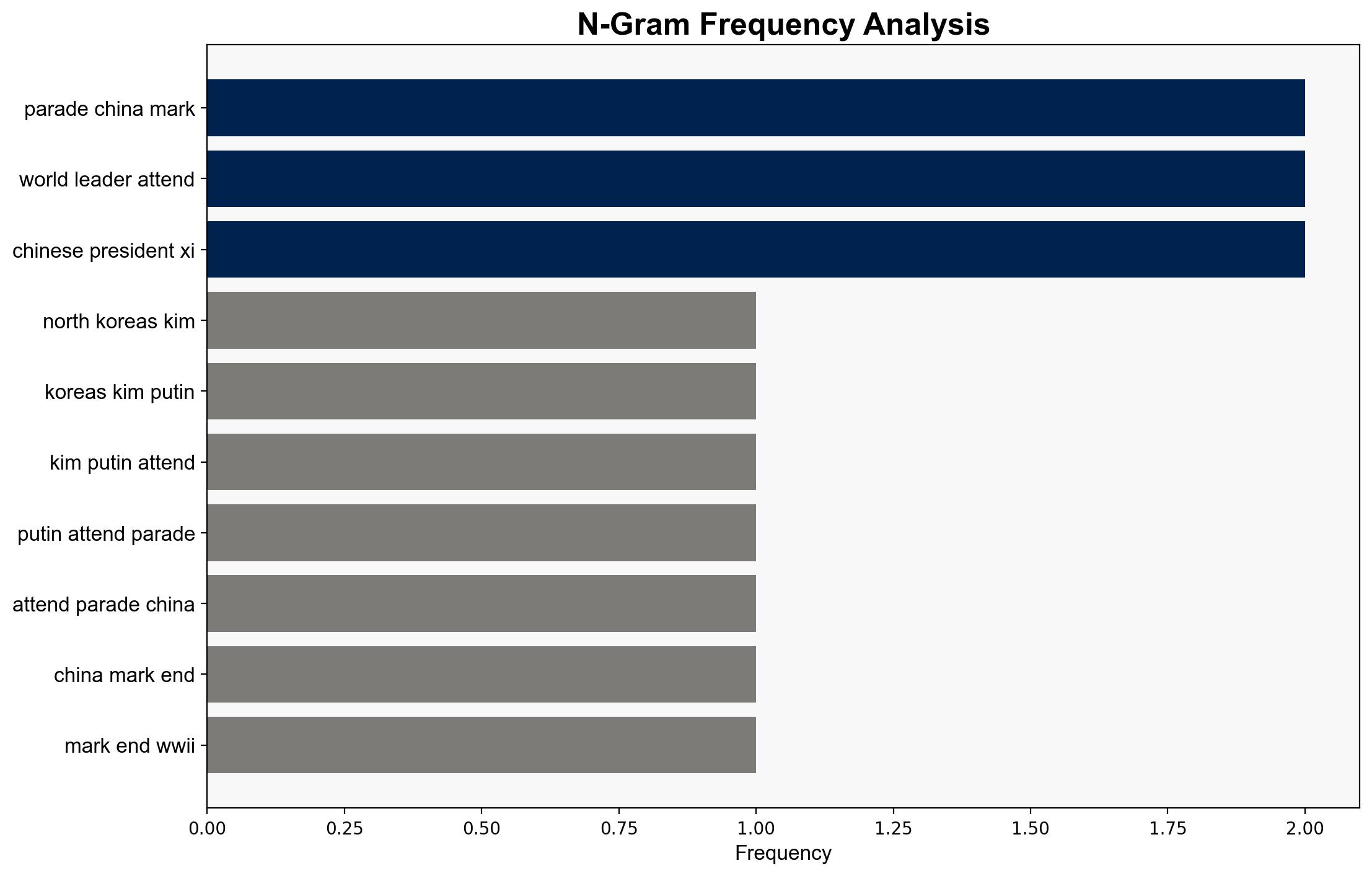North Koreas Kim Putin to attend parade in China marking end of WWII – Al Jazeera English
Published on: 2025-08-28
Intelligence Report: North Koreas Kim Putin to attend parade in China marking end of WWII – Al Jazeera English
1. BLUF (Bottom Line Up Front)
The attendance of Kim Jong Un and Vladimir Putin at the military parade in China is a strategic demonstration of solidarity among nations facing Western sanctions. The most supported hypothesis is that this event serves as a platform for reinforcing alliances and signaling geopolitical resistance to Western influence. Confidence Level: Moderate. Recommended action includes monitoring subsequent diplomatic and military engagements among these nations.
2. Competing Hypotheses
1. **Hypothesis A**: The parade attendance is primarily a symbolic gesture to showcase unity among China, North Korea, and Russia against Western sanctions and influence. This hypothesis is supported by the historical context of these nations’ alliances and recent cooperative actions.
2. **Hypothesis B**: The event is a strategic opportunity for behind-the-scenes negotiations on military and economic collaborations, potentially including arms deals or economic support frameworks. This hypothesis considers the ongoing military and economic pressures faced by North Korea and Russia.
Using ACH 2.0, Hypothesis A is better supported due to the public nature of the event and the historical precedent of using such gatherings for symbolic messaging. Hypothesis B remains plausible but lacks overt evidence in the current intelligence.
3. Key Assumptions and Red Flags
– **Assumptions**: It is assumed that the parade’s primary purpose is symbolic and not a cover for clandestine negotiations. Another assumption is that the presence of these leaders will not lead to immediate policy shifts.
– **Red Flags**: The lack of Western leader attendance could indicate a deeper geopolitical rift. Additionally, the absence of detailed information on any private meetings raises questions about undisclosed agreements.
4. Implications and Strategic Risks
The parade could solidify a trilateral bloc, potentially leading to coordinated actions that challenge Western geopolitical strategies. Risks include increased military cooperation that might destabilize regional security dynamics, particularly concerning North Korea’s nuclear ambitions and Russia’s ongoing conflict with Ukraine. Economically, strengthened ties could undermine sanctions’ effectiveness.
5. Recommendations and Outlook
- Enhance intelligence collection on subsequent diplomatic engagements among China, North Korea, and Russia.
- Prepare for potential shifts in regional military postures, particularly in the Korean Peninsula and Eastern Europe.
- Scenario Projections:
- Best Case: The event remains symbolic, with no significant policy changes.
- Worst Case: The parade leads to new military alliances or economic agreements that challenge Western interests.
- Most Likely: Continued symbolic gestures, with gradual increases in military and economic cooperation.
6. Key Individuals and Entities
– Kim Jong Un
– Vladimir Putin
– Xi Jinping
– Masoud Pezeshkian
– Alexander Lukashenko
– Prabowo Subianto
– Narendra Modi
7. Thematic Tags
national security threats, geopolitical alliances, regional focus, military cooperation





